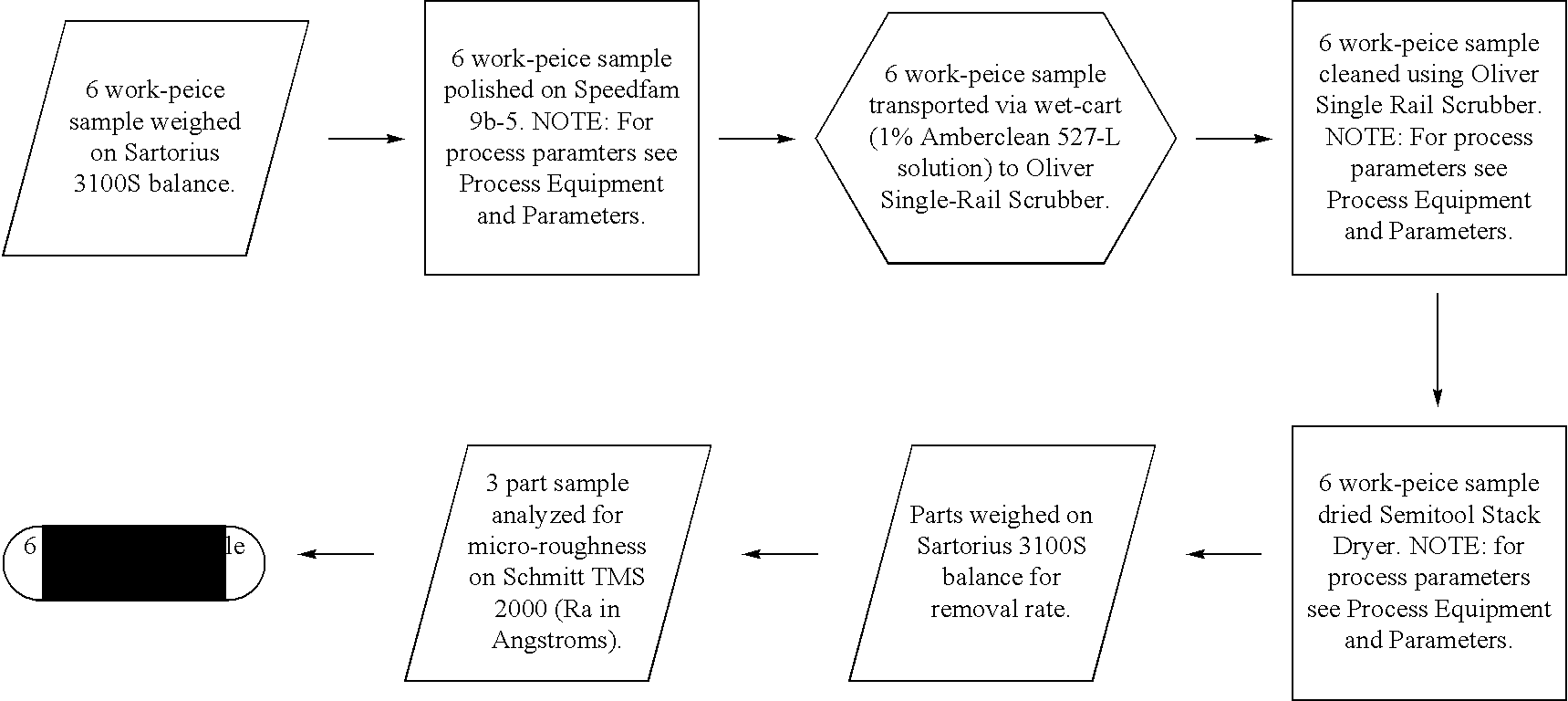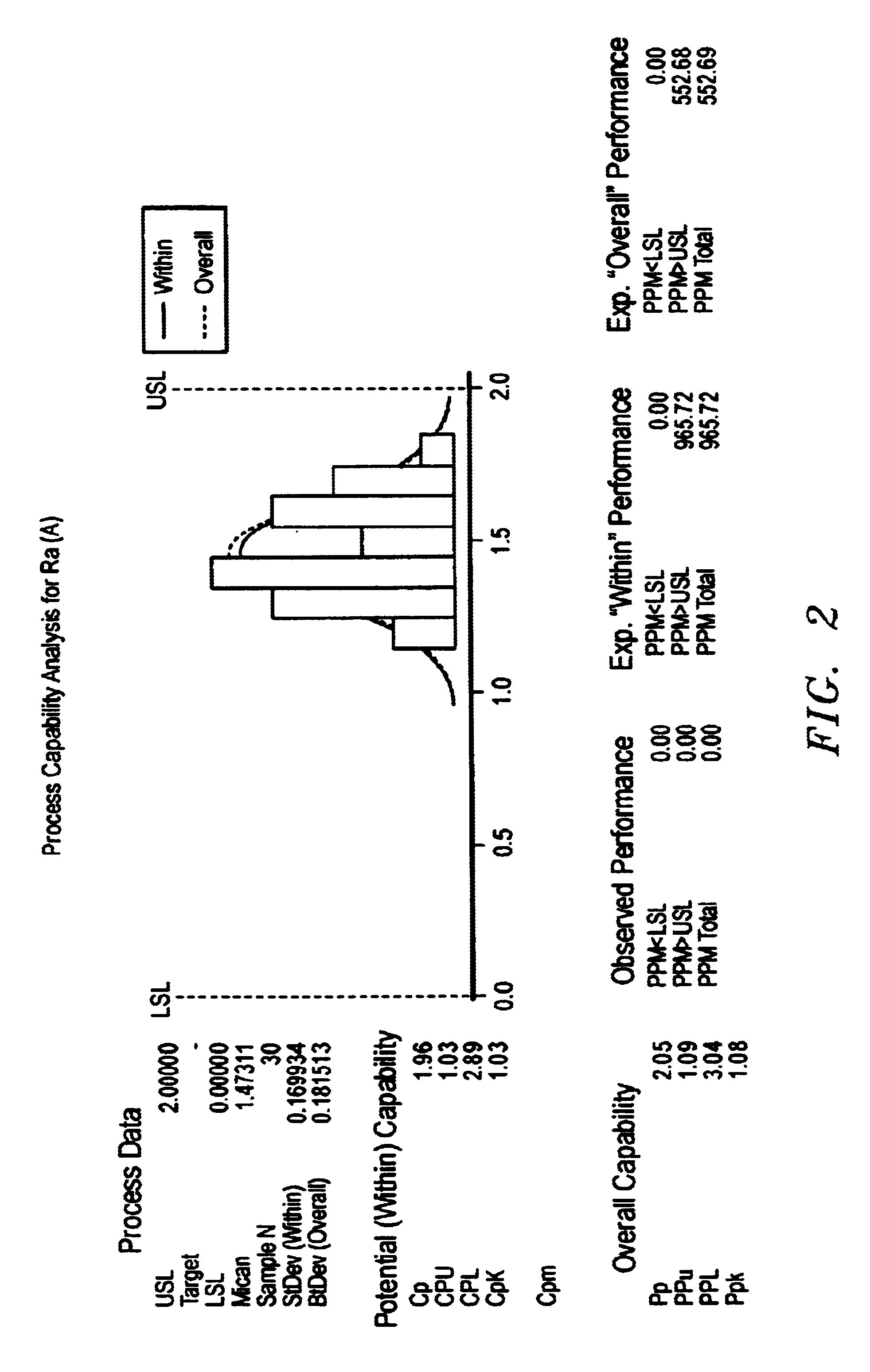Chemical mechanical polishing of nickel phosphorous alloys
a technology of nickel phosphorous and chemical mechanical polishing, which is applied in the direction of polishing compositions, other chemical processes, lapping machines, etc., can solve the problems of insufficient removal rate of ni--p layer, laborious, two sequential operations that can take a substantial amount of time, etc., and achieve the effect of increasing the solubility of the nickel removed
- Summary
- Abstract
- Description
- Claims
- Application Information
AI Technical Summary
Benefits of technology
Problems solved by technology
Method used
Image
Examples
example 1
This example illustrates the contribution to removal rate by individual chemical groups in the presence of an oxidizer. An initial screening was to be performed involving forty-eight different constituents. At this initial stage of testing, the concentration of hydrogen peroxide as a thirty-five percent by weight solution was held constant at 2.57. This is to say that during the first phase of the slurry development process hydrogen peroxide in the form of a thirty-five percent by weight solution was held constant in every iteration of slurry at a total percentage by weight of 2.57. Each of the remaining forty-seven constituents was evaluated as a one percent by weight solution comprised of silica as described above, hydrogen peroxide as described above, the specific constituent and the remaining weight percent water. A listing of these constituents and the product codes assigned to them are found in table 1a. The procedure by which each of these constituents was evaluated is accord...
example 2
This example illustrates the effects and interactions of ten specific constituents. A fractional factorial design of experiment model was utilized to approximate the magnitude of interactions of ten constituents up through the third-order. This is to say that through statistical analysis of removal data, the effects individually and interactions with any one or two other constituents were evaluated. Process procedures, parameters and equipment were held constant as described in tables A and B to evaluate constituents with coded units A0, A5, A6, A17, A20, A23, A27, A29, A31 and A32. In uncoded units, these constituents were hydrogen peroxide, ethylene diamine, aluminum nitrate, HEDP, HPA, phosphoric acid, citric acid, glycine, oxalic acid and tartaric acid respectively. A design of experiment model of resolution four was utilized where the forty-two slurries were formulated according to table 2a. Further, this table describes the actual percent by weight each constituent was present...
example 3
Example 3 illustrates the effects and interactions more specifically of constituents, in coded units, A17, A20, A23, A27 and A29. These constituents in uncoded units are HEDP, HPA, phosphoric acid, citric acid and glycine respectively. Again, process procedures, parameters and equipment were held constant as described in tables A and B. Silica was present in each slurry at a concentration of 5.71 percent by weight of the total solution. Hydrogen peroxide in a 35 percent by weight solution was held constant in each slurry at a level of 2.57 percent by weight of the total solution. A fractional factorial design of experiment model was created to incorporate these chemistries. By so doing, nineteen slurries were formulated and quantitatively analyzed by examining removal rate data. The design of experiment model is defined in table 3a. A statistical analysis of this data is found in table 3b where the estimated effects and coefficients of individual constituents and interactions up thr...
PUM
| Property | Measurement | Unit |
|---|---|---|
| particles sizes | aaaaa | aaaaa |
| volume average particle size | aaaaa | aaaaa |
| particle sizes | aaaaa | aaaaa |
Abstract
Description
Claims
Application Information
 Login to View More
Login to View More - R&D
- Intellectual Property
- Life Sciences
- Materials
- Tech Scout
- Unparalleled Data Quality
- Higher Quality Content
- 60% Fewer Hallucinations
Browse by: Latest US Patents, China's latest patents, Technical Efficacy Thesaurus, Application Domain, Technology Topic, Popular Technical Reports.
© 2025 PatSnap. All rights reserved.Legal|Privacy policy|Modern Slavery Act Transparency Statement|Sitemap|About US| Contact US: help@patsnap.com



